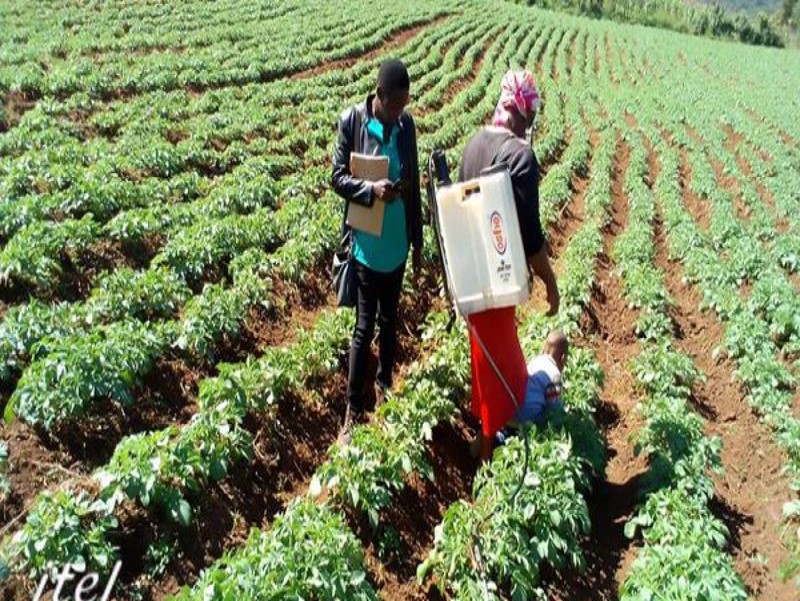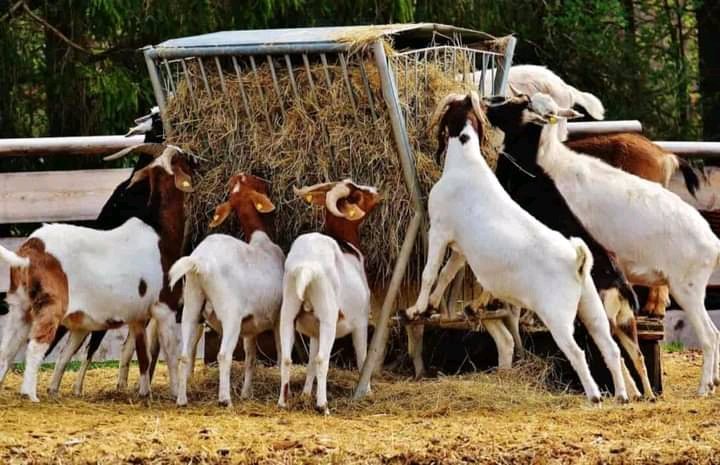Potato Farming: Effective control of blight, wilt and other diseases

Potato is the second most important food crop in Kenya after maize and it plays a huge role in food security and income generation.
However, many farmers face challenges that reduce their harvests and profits. The biggest of these challenges being potato diseases.
These diseases not only lower yields but also reduce the quality of potatoes, making them difficult to sell in the market.
This article provides a comprehensive guide to common potato diseases, their causes and effective control methods that farmers can apply to increase their productivity.
1. Late Blight (Phytophthora infestans)
Late blight is the most destructive potato disease worldwide and is infamous for causing the Irish Potato Famine in the 1840s. In Kenya and other potato-growing regions, it continues to be the most feared disease.
Symptoms:
- Water-soaked spots on leaves that enlarge and turn brown.
- White fungal growth under the leaves during humid conditions.
- Dark brown to black lesions on stems and tubers, leading to rot.
Control methods:
- Plant resistant varieties such as Shangi, Tigoni or Dutch Robjin.
- Practice crop rotation with non-solanaceous crops (avoid tomatoes and eggplants).
- Apply fungicides such as Ridomil Gold, Mancozeb or Metalaxyl before heavy rains.
- Ensure proper spacing for good air circulation and avoid waterlogging.
2. Early Blight (Alternaria solani)
Early blight is another common potato disease that affects leaves, stems and sometimes tubers. It is most severe in warm climates.
Symptoms:
- Small dark spots on lower leaves.
- Spots develop concentric rings, giving a “target board” appearance.
- Leaves turn yellow, dry and drop prematurely.
Control methods:
- Use resistant varieties.
- Apply fungicides like chlorothalonil or mancozeb.
- Improve soil fertility with adequate nitrogen and potassium to boost plant immunity.
- Practice field hygiene remove infected plant residues.
3. Potato Scab (Streptomyces scabies)
Potato scab affects tubers and reduces their market value, although it rarely affects yield.
Symptoms:
- Rough, corky patches or raised lesions on potato skins.
- Affected tubers may look unattractive but are still edible.
Control methods:
- Plant scab-resistant varieties.
- Avoid alkaline soils (maintain soil pH below 5.2).
- Rotate potatoes with cereals and legumes.
- Keep soils moist during tuber formation.
4. Bacterial Wilt (Ralstonia solanacearum)
Bacterial wilt is one of the most devastating potato diseases in Africa, leading to total crop loss if not controlled.
Symptoms:
- Sudden wilting of potato plants, even when soil moisture is adequate.
- Brown streaks in stems when cut.
- When the stem is placed in water, milky bacterial ooze streams out.
Control methods:
- Use certified, disease-free seed potatoes.
- Rotate crops with cereals and legumes for at least 3–4 seasons.
- Rogue and destroy infected plants immediately.
- Avoid moving soil or tools from infected fields.
5. Blackleg and Soft Rot (Pectobacterium spp.)
These bacterial diseases attack stems and tubers, especially in wet conditions.
Symptoms:
- Stems turn black and soft near the soil line.
- Tubers develop a foul-smelling, watery rot.
Control methods:
- Plant healthy seed tubers.
- Ensure good drainage to prevent waterlogging.
- Store harvested potatoes in well-ventilated, dry conditions.
- Avoid injuries during harvesting, as wounds allow bacteria entry.
6. Potato Viruses (PVY, PVX, PLRV)
Potato viruses are spread mainly through infected seed tubers and aphids.
Symptoms:
- Stunted growth and yellowing of leaves.
- Leaf rolling and mosaic patterns.
- Reduced tuber size and yield.
Control methods:
- Plant virus-free certified seed potatoes.
- Control aphids, which are major vectors.
- Rogue out and destroy infected plants.
- Avoid replanting harvested tubers.
Best practices for managing potato diseases
To effectively manage potato diseases, farmers need to combine several approaches:
- Use certified seeds – avoid recycled or market potatoes as planting material.
- Practice crop rotation – avoid planting potatoes continuously on the same land.
- Maintain field hygiene – remove infected plants and destroy crop residues.
- Apply fungicides or pesticides responsibly – only when necessary and in recommended doses.
- Improve soil health – through organic manure, proper drainage and balanced fertilization.
- Monitor fields regularly – early detection reduces losses.
Potato farming can be highly profitable, but farmers often lose a large portion of their harvest due to diseases.
By identifying potato diseases early and applying the right control measures, farmers can protect their crops and improve both yields and profits. Using certified seed, practicing crop rotation and adopting integrated disease management are the most effective ways to safeguard potato farms.
With these control methods, farmers can look forward to healthier potato crops, reduced losses and improved incomes.










